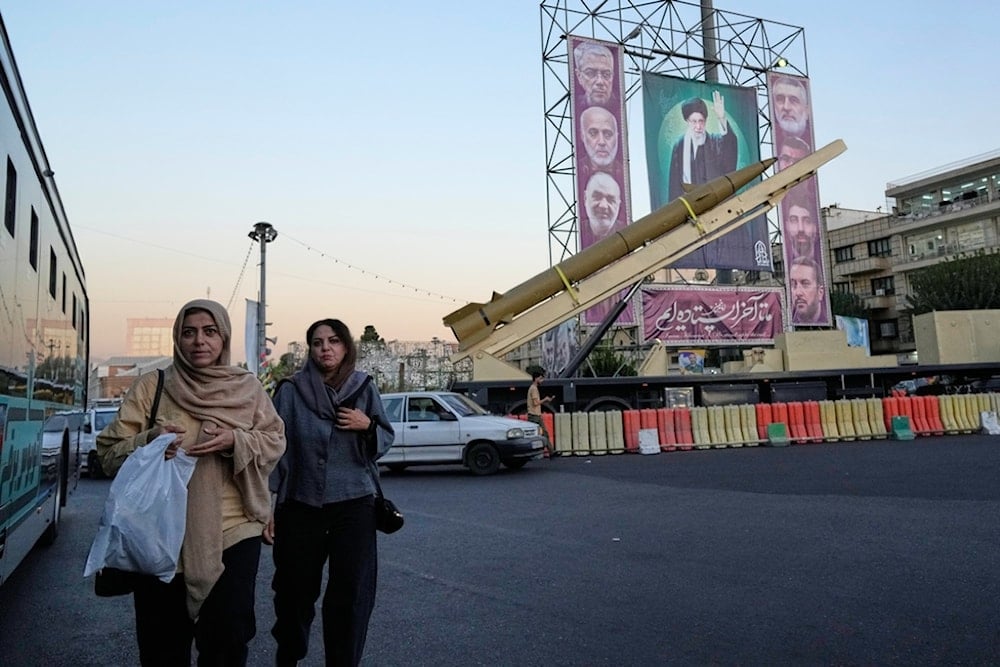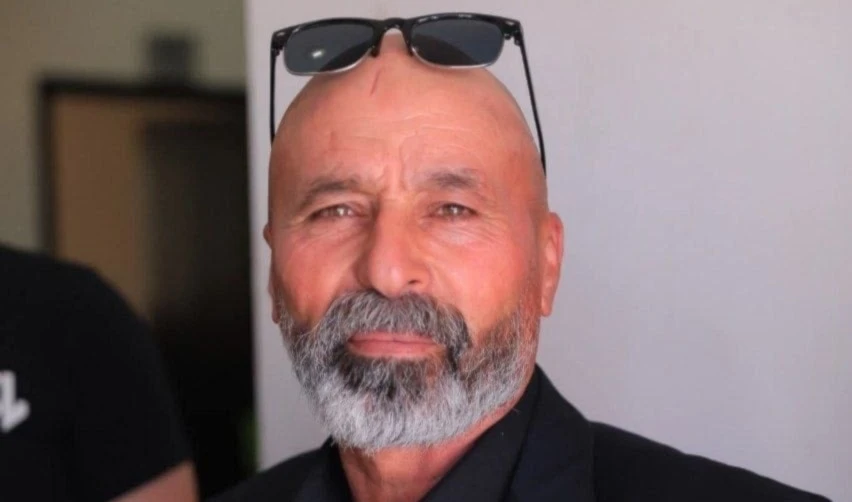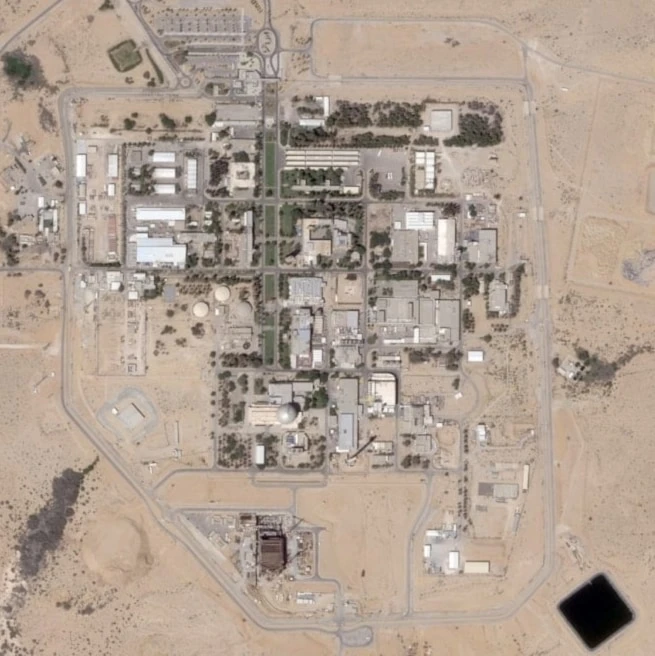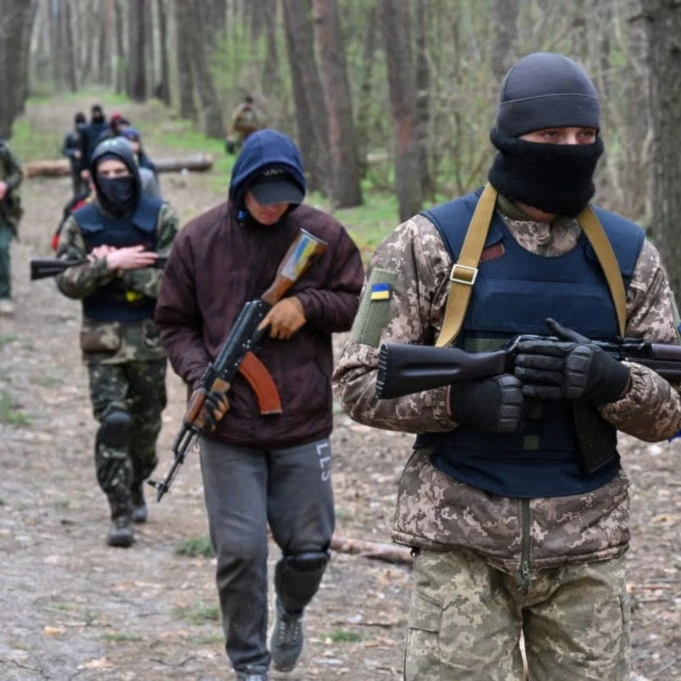IRGC reveals new details on Haniyeh assassination and Iran’s response
IRGC spokesman Ali Mohammad Naeini said Ismail Haniyeh was killed by a direct missile strike and confirmed Iran’s firm military response was pre-approved.
-

People walk past a domestically-built missile "Khaibar-buster," and banners showing portraits of Iranian Leader Ayatollah Ali Khamenei, center, and the late armed forces commanders at Baharestan Square in Tehran, Thursday, September 25, 2025 (AP)
The spokesperson for Iran’s Islamic Revolution Guard Corps (IRGC), Brigadier General Ali Mohammad Naeini, revealed new details on Sunday regarding the assassination of martyr Ismail Haniyeh, asserting that the attack involved no internal sabotage and was executed by a missile strike that hit “directly through the window” as Haniyeh was speaking on the phone.
“The assassination of martyr Ismail Haniyeh did not involve any act of sabotage,” Naeini stated. “A missile was fired from a certain distance and struck the window directly, hitting him while he was on a phone call from the same direction the missile came from.”
National Security Council ordered a response
Following the assassination, Naeini said, the Supreme National Security Council concluded that a firm response was necessary and left the timing of that retaliation to the Armed Forces.
“After the martyrdom of Haniyeh, the National Security Council meeting concluded that there must be a definitive response,” he explained. “The timing of the retaliation was left to the military command.”
He added that the delay in response was due to challenges faced during Operation True Promise 1, noting that “between True Promise 1 and 2, Martyr Hajizadeh’s team achieved in two months what would normally take a year.”
“The government did not oppose either of the True Promise operations,” he clarified, adding that the only debate concerned the location of the launch. “Some believed the retaliation should come from one of the Resistance Axis fronts, but ultimately a unified decision was made.”
War preparations and leadership strikes
According to Naeini, by February, the Khatam al-Anbiya Headquarters had already concluded that war was inevitable. He said a series of “Iqtadar” (Power) military drills had been carried out “to strengthen deterrence and alter the enemy’s calculations,” but neither diplomacy nor deterrence had succeeded because “the enemy assumed Iran lacked deterrent capability and had weakened in the region.”
“In the days leading up to the war, the IRGC’s combat readiness was complete,” he said. “The visit of Martyr Major General Hossein Salami to Bandar Abbas one day before his martyrdom was to prepare the forces for war.”
He revealed that two days before the conflict erupted, Salami said that Iran’s missile capability had risen by “no less than 40%” following True Promise 2, a development that “became evident in the recent war.”
“We were not surprised,” Naeini added. “Martyrs Hajizadeh and Salami were targeted in their offices, which shows that our military readiness was fully active.”
The first hours of the war
Naeini explained that the enemy struck at 4 a.m., killing senior commanders, after which the IRGC launched its retaliatory operations with drones, followed by missile attacks that evening.
“In the early hours of the war, the Supreme Leader had a direct and central role in reorganizing the command and control cycle,” Naeini revealed. “I tried to contact Martyr Salami but couldn’t; the communications center informed me that his building had been bombed.”
He added that the IRGC had not expected the enemy to target top commanders in the first wave of strikes.
“The Iranian people’s reaction was astonishing,” he continued. “The Zionist entity thought it had ended the battle, but Friday prayers and Eid al-Ghadir ceremonies were a majestic response that demonstrated the nation’s unity and resilience.”
“Israel” failed to stop Iran’s missile response
“On the eighth day of the war, we launched a single missile to send a message to the Zionist entity, that it was incapable of intercepting even one of our rockets,” Naeini said.
He noted that Iran executed 22 waves of operations, deliberately designed to make “the Zionists repeatedly experience the fear of running to shelters.”
“From the fifth to the eighth day, we held complete superiority in the fighting,” Naeini emphasized. “On the final day, we achieved total victory. The enemy tried to project fake strength, but we continued firing missiles until the last moment.”
According to the IRGC spokesperson, Iranian forces downed at least 80 advanced enemy drones during the 12-day war.
“From the third to the fourth day onward, we faced no problems with small drones,” Naeini said, explaining that the IRGC “neutralized them through cyber operations and short-range weapons.”
He concluded by confirming that 14 missiles were fired toward the US al-Udeid base, six of which “hit their targets with precision.”

 4 Min Read
4 Min Read









